—-
To stay in the loop with the latest features, news and interviews from the creative community around licensing, sign up to our weekly newsletter here
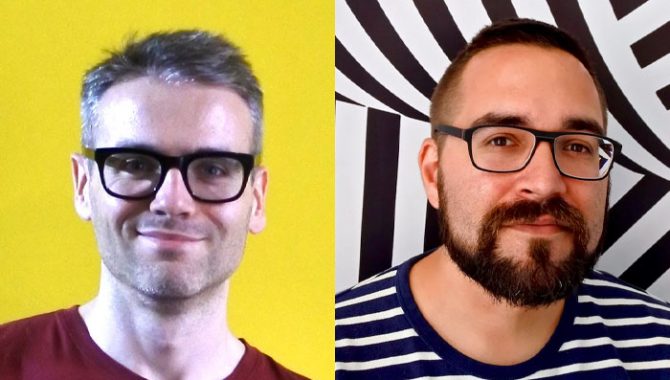
Ben Cox and Vojtech Dvorak from the creative studio Fraktal discuss inspiration, the metaverse and design heroes.
Hi guys. To start with, can you give us a brief introduction to Fraktal and how you got going?
We had worked together for a couple of years previously in the licensing field, but an opportunity arose to go out on our own. We decided that running our own company was the best way to get the maximum fulfilment from our careers, so back in 2013 we started Fraktal and took our destiny in our hands.
Once we had announced our intention to start a company, one of our contacts in the industry asked if we were interested in working on a project with him. The only caveat was that we needed to be fully registered and ready to work within a couple of weeks. When we started, we barely had the bones of a company, so the process from moving from freelancers to running our own company was very quick!
When you get a new project for Fraktal, how do you prepare for it? What sort of research do you undertake?
Each new project comes with its own requirements and history – and each client is unique. We try to make things as streamlined and straightforward for them as possible. Sometimes a project has very clearly defined parameters with a clear objective, and sometimes not. Depending on the amount of information available, it’s sometimes necessary for us to thoroughly research all aspects of the project, especially if it’s a new product looking to make its own space in the market.
We would look at all aspects such as target demographic, competitors and create a solution which can make the maximum impact on the shelf while still bringing it in on budget and time. Design is often an emotional and instinctual business, and we’ll rely on our experience to create the best solution possible.
Design agencies are all different. Our clients choose to work with us as our experience and skills result in something that feels distinctly ‘Fraktal’.
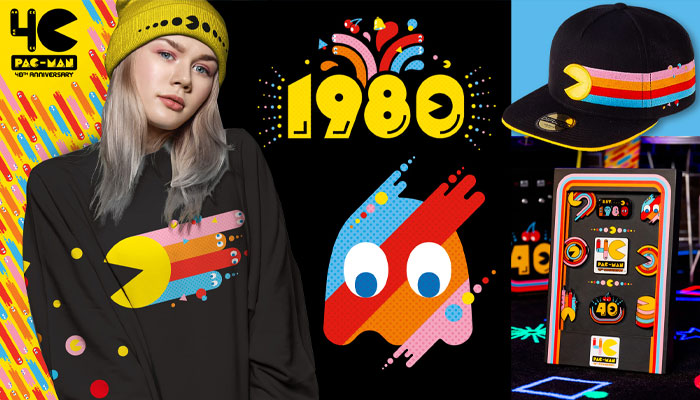
Thinking more broadly outside of the licensing bubble, are there designers or business sectors you look at for trends and influences?
Inspiration can take many forms and come from anywhere and everywhere. The internet is probably the richest wealth of inspiration on the planet and is normally our first port of call. You can access all of humanity’s information at the touch of a button. It is an amazing time to be alive.
New upcoming trends can be accessed in an instant as well as inspiration from yesteryear. Trends tend to be cyclical and find new audiences who didn’t experience them the first time. Other avenues of inspiration vary from fashion and mass media such as films. All of this media feeds off and inspires each other, which is why prevalent styles of the time become so intricately linked to that time.
Licensing is a multi-product business… How easy is it to create a style guide that serves all these different market sectors?
Creative assets that agencies such as ours create can be used on huge variety of different products, so we have to create them to be as flexible as possible. By flexible, we mean that the assets can be taken apart, redesigned and reproposed with a minimum of fuss.
We have been on the receiving end of having to use such assets and they can be difficult to work with and this can limit what is possible creatively. As a result, we always strive to create assets that answer the needs of the client and the designer that will inevitably have to use the files.
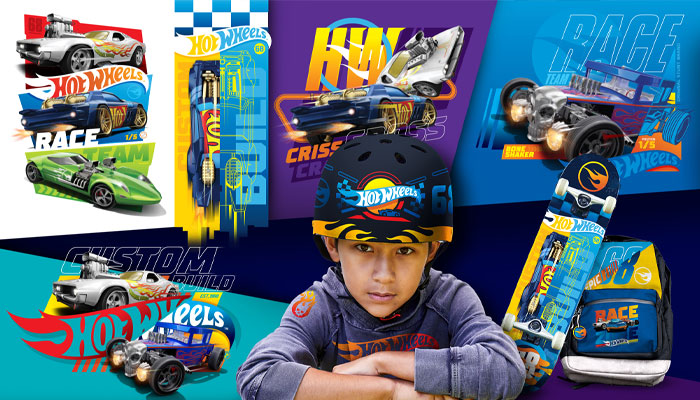
In recent years, have you seen any new product categories emerging in licensing which are influencing your approach to design?
The most exciting up and coming sector today is by far the video game industry. The advancement of hardware and programming in the modern computing age is resulting in some of the most exciting visuals and user experiences previously unimaginable.
In our opinion, the Metaverse won’t be delivered by social media companies but by game developers. In fact, the Metaverse is already here in the form of games such as Warcraft, Overwatch and No Mans Sky to name but a few. In the future, games like these will be become more immersive and the lines between reality and the digital world will blur. If you think that games are impressive now you haven’t seen anything yet!
Thinking of some of the projects you have been involved in, can you share a few highlights with us?
Recently we have begun working with the Wizards of the Coast, who are famous for the Dungeons & Dragons brand. This brand has a long and distinguished pedigree with a well-established fanbase. The D&D brand has been entertaining audiences for over 40 years and has been reinterpreted many times to fit the audience tastes of the day.
When we became involved with the project, we asked to present several design trends that we felt would work with the brand. Each trend was very different from each other, but at their core they were still fundamentally Dungeons & Dragons. Being allowed to experiment with styles and yet tapping into the essence of a brand is always fun. We are always grateful to our clients for allowing us to play in their sandbox.
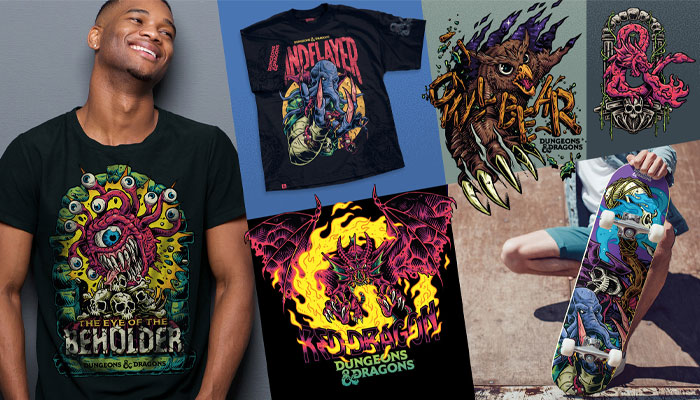
What advice would you give to companies setting design briefs? What do you need to know to make your job easier?
Someone once said: ‘A well-defined brief is its own solution’, although we understand that licensing can be fast paced and sometimes you need to hit the ground running! This can mean that many of the assets that we would prefer to work with are not available, such as character art or logos. In situations like this, expectations have to be measured.
When lots of material is unavailable at the beginning, this can cause the amount of time and budget a project needs to extend. In an ideal world, these assets would be completed before an agency such as ours is involved as ultimately, this saves time and money.
An understanding of the creative process and how budgets impact on projects is also beneficial. Not everyone may have this experience, and in some cases, we may be the first contact that a client has ever had with the creative process. In situations like this, we can help inform and guide clients by taking them by the hand through the design process.
In some cases, we have also identified problems that a client may be completely unaware of and offered cost efficient solutions that can make their life and that of their licensing partners easier.
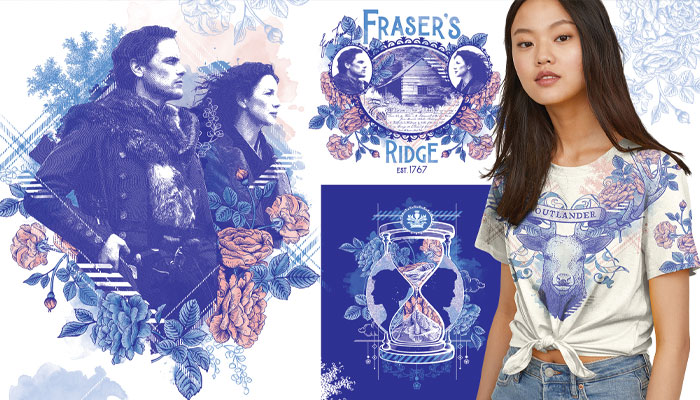
Licensing is an international business. What steps do you take to make sure the design work you produce can travel internationally?
Good design always travels well, but sometimes clients require assets that are more catered to their specific market. In cases like this, we would still apply the same work methodology as we would to any of our other projects.
For example, we’ve worked extensively on the Mattel brand Thomas & Friends and much of our work has appeared in Asian markets such as Japan. In fact, there is a train that travels to the Thomas & Friends theme park situated near Toyko that uses many of the assets that we’ve created for the American, European market. I suppose the key to creative materials that can work in different markets is to create designs that are engaging, exciting and on some occasions inspiring.
Finally, if you had to host a dinner party with three of your design heroes as guests, who would you choose and why?
Ben: For me personally, I would have to say Drew Struzan as he’s one of my all-time heroes. He is the illustrator who has given us iconic posters for such films such as Star Wars, Back to the Future and Indiana Jones. His work is often imitated but rarely surpassed. Alex Ross is another illustrator I love. He mainly works on comic characters but he’s unique for his realistic depictions of superheroes and his watercolour style. Finally, I’ve always been a fan of The Designers Republic. In my formative years at university, the work that these guys was putting out seemed to break all the design rules. Really inspiring stuff!
Vojta: I’m also a big fan of Drew Struzan, but I also love the work of MC Escher, the Dutch graphic artist who made beautiful, intricate, mathematically inspired illustrations and woodcuts of impossible objects. The typography work of Erik Spiekermann is also an inspiration. His typography is world-famous and you have probably used one of his fonts without realising it!
Guys, insightful stuff. Much appreciated.
Enter your details to receive Brands Untapped updates & news.